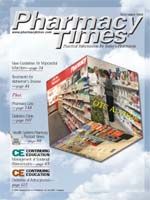Publication
Article
Pharmacy Times
The Value of Generic Drugs to Hospitals
Author(s):
I have had the pleasure of participating in roundtable discussionsat 2 conferences sponsored by the GenericPharmaceutical Association (GPhA) this year. Like most ofyou, my focus has been on the increasing cost of drugs, largelydriven by increased utilization of expensive drugs and innovativeproducts. Preparing for my participation in these meetingsand interacting with those in attendance has elevated mydormant appreciation for the evolution of the generic drugindustry and the value it brings to hospital pharmacy.
When I entered the profession, the availability of genericdrugs was limited, the manufacturers were not wellknown, and the quality of the generic products was suspect.Pharmacists invested considerable time investigatinga generic drug's bioavailability before they purchased it.Sure enough, in pursuit of "profit," some generic drugsentered the marketplace that were clearly substandard andgave the whole industry a black eye. Trust in product qualitywaned among pharmacists, physicians, and mostimportantly patients.
Increased vigilance by regulators and pharmacists?coupledwith the resolve of generic manufacturers, which tendedto be leaders with a sustained presence in the marketplace?have increased the reliability of product quality for mostgeneric manufacturers. Once the quality issue was resolved tomy satisfaction, I shifted my attention to drugs manufacturedby big pharma companies and let my interest ingeneric drugs fade significantly.
I have gained an appreciation for thelegislative and regulatory reform thathas enabled the growth of this segmentof the industry. Reforms havecreated a competitive interest in gettinggeneric drugs to market as soon asthe original patent expires, thus reducingacquisition cost dramatically. Legal challengescontinue between the patent holderand potential generic manufacturers, but thegeneric drug industry has been increasingly committedto staying the course and bringing new genericdrugs to market.
Pending legislation and regulations, at both state andfederal levels, have potential (good and bad) implicationsfor the generic drug industry and hospital pharmacy. Weneed to encourage our state and national professional associationsto remain vigilant and proactive regarding potentialchanges, and to align with the GPhA as appropriate.
The value generic drugs bring to hospital pharmacy goesbeyond reducing drug costs without compromising quality.Generic manufacturers are much more likely to respond toour needs for unit-dose packages with bar codes. Becausenew regulations require bar codes on all packages, manymanufacturers that are patent holders appear to be reducingor eliminating product availability in unit-dose packages.Generic manufacturers also should be able to ensure consistentproduct availability.
Generic manufacturers should elevate their presence inhospitals and remind us of their value. Expanding productportfolios, including those in compliant unit-dose packages,will increase their value considerably. Innovations in packagingfor oral solids, oral liquids, and parenterals also will bereceived well, because they will enable hospital pharmaciesto allocate human resources more efficiently.
Finally, generic manufacturers need to remind us that"newer isn't always better" when a patent expires and newtherapeutic duplicates are introduced at higher prices thanthe established (now multisource) drug. Most importantly,generic manufacturers need to sustain their commitment toquality and bioequivalence, and to police themselves toensure that they maintain their positive image.
Hospital pharmacists should make an effort to embracegeneric manufacturers and maximize purchases of allpackages. We should encourage packaging innovationand communicate our needs. Enduring expandedrelationships with generic manufacturers are awin for patients, hospital pharmacies, and thehealth care system.







